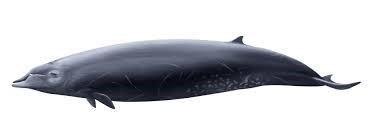Mains: GS I – Art and Culture
Recently, The Government of India will host the 20th session of the UNESCO Intergovernmental Committee for Safeguarding of the Intangible Cultural Heritage from 8 to 13 December 2025 in New Delhi.
Reference
Mains: GS II – Statutory Bodies
Recently, protests erupted over the draft Indian Statistical Institute Bill, 2025 released by Ministry of Statistics and Programme Implementation (MoSPI).
Prelims: Current events of national and international importance | Species
Why in news?
At least 10 blackbucks have died at a zoo in Jharkhand’s Jamshedpur due to a bacterial infection - Haemorrhagic Septicaemia (HS).
In Humans – While P. multocida can infect humans, the specific serotypes causing HS (B:2, E:2) haven't been confirmed to infect people, but caution is still advised.
It is listed by the World Organisation for Animal Health (OIE) as a major transboundary animal disease.
References
Prelims: Current events of national and international importance | Economy
Why in news?
ED suspects that rules under Foreign Exchange Management Act (FEMA) were violated when Kerala Infrastructure Investment Fund Board (KIIFB) raised funds through Masala Bonds.
Key Characteristics
Comparison between Conventional Foreign Bond and Masala Bond
|
Component
|
Conventional Foreign Bond |
Masala Bond
|
|
Denomination |
Foreign currency |
Indian rupees |
|
Currency risk borne by |
Issuer
|
Investor
|
|
Exchange rate fluctuation |
Impacts Indian issuer |
Impacts foreign investor
|
|
Example
|
USD bond by Indian firm
|
INR bond sold to global investor |
References
Prelims: Current events of national and international importance | Species
Why in news?
A team of scientists has spotted the rare ginkgo-toothed beaked whales for the first time in the wild along the coast of Baja California in Mexico.
Key Features

References
Prelims: Current events of national and international importance
Why in News?
Recently, the Registrar General of India (RGI) has directed all the states and union territories to complete the appointment of census functionaries for the massive data collection exercise.
The RGI has developed a web portal i.e, Census Management and Monitoring System (CMMS) for Census 2027 to manage and monitor all activities of census 2027.
|
Registrar General of India |
|
Reference
The Hindu| RGI Directions for the appointment of Census Functionaries
Prelims: Current events of national and international importance
Why in News?
Reference
Preparing for the Union Public Service Commission (UPSC) examination is an exceptionally demanding process, requiring not only a solid grasp of core subjects but also a thorough and up-to-date understanding of current affairs. Given the vastness of the UPSC syllabus, current events play a critical role in shaping the examination questions. Success in the UPSC requires aspirants to stay continuously informed about the latest national and international developments.
The IAS Parliament platform is a highly reliable and comprehensive resource specifically designed to meet this need. It provides crucial news and insights across a spectrum of relevant topics, including:
The platform also covers vital sectors such as agriculture, education, and health. By providing regular updates on governmental functions and departmental activities, IAS Parliament serves as an ideal and centralized source for current affairs preparation.
To ensure aspirants are comprehensively prepared, IAS Parliament offers a structured and rich daily content schedule:
Beyond informative articles, the IAS Parliament integrates essential tools for self-assessment and progress tracking:
To maintaining a rigorous focus on current affairs is fundamental to UPSC preparation. The IAS Parliament stands out as a one-stop-shop that provides reliable, comprehensive, and regularly updated coverage of current affairs. Its user-friendly interface and diverse range of resources—from daily digests and focused articles to quizzes and analytical content—make it an indispensable tool for every serious UPSC aspirant aiming for success.
Also Read: